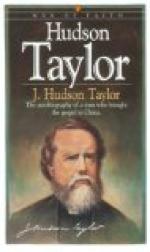=Cohoes=, where the Mohawk joins the Hudson, has one of the finest water powers in the country. Its name is of Indian origin and signifies “the island at the falls.” This was the division line between the Mahicans and the Mohawks, and when the water is in full force it suggests in graceful curve and sweep a miniature Niagara. The view from the double-truss iron bridge (960 feet in length), looking up or down the Mohawk, is impressive.
* * *
Oh, be my falls as bright as thine!
May heaven’s relenting rainbow shine
Upon the mist that circles me,
As soft as now it hangs o’er thee!
Thomas Moore.
* * *
Passing through Waterford, and Mechanicville which lies partly in the township of Stillwater, with its historic records of Bemis Heights and burial place of Ellsworth, the first martyr of the Civil war, we come to—
=Round Lake=, nineteen miles north of Troy, and thirteen south of Saratoga, near a beautiful sheet of water, three miles in circumference, called by the Indians Ta-nen-da-ho-wa, which interpreted, signifies Round Lake. The camp-meeting and assembly grounds consist of 200 acres. The air is pure and invigorating and the grove and cottages inviting. The drives in the vicinity are delightful to Saratoga Lake, to the Hudson River, to the historic battlefields of Bemis Heights and Stillwater.
=Ballston Spa=, thirty-one miles from Albany, is the county seat of Saratoga. Here are several well-known mineral springs, with chemical properties similar to the springs of Saratoga. Over ninety years ago Benjamin Douglas, father of Hon. Stephen A. Douglas, built a log house, near the “Old Spring,” for the accommodation of invalids and travelers, and at one time it looked as if Saratoga would have a vigorous rival at her very doors; but its hotel glory has departed and the old “Sans Souci” of the days of Washington Irving is a thing of the past.
* * *
A gallant army formed their last array
Upon that field, in silence and deep gloom,
And
at their conqueror’s feet,
Laid
their war-weapons down.
Fitz-Greene Halleck.
* * *
=Saratoga=, thirty-eight miles north of Albany, one hundred and eighty-two miles from New York, is the greatest watering place of the continent. Its development has been wonderful, and puts, as it were, in large italics, the prosperity of our country. The first white man to visit the place was Sir William Johnson, who, in 1767, was conveyed there by his Mohawk friends, in the hope that the waters might afford relief from the serious effects of a gunshot wound in the thigh, received eight years before in the battle of Lake George, at which time his army defeated the French legions under Baron Dieskau. It was not until the year 1773, six years after Sir William Johnson’s initial visit, that the first clearing was made and




